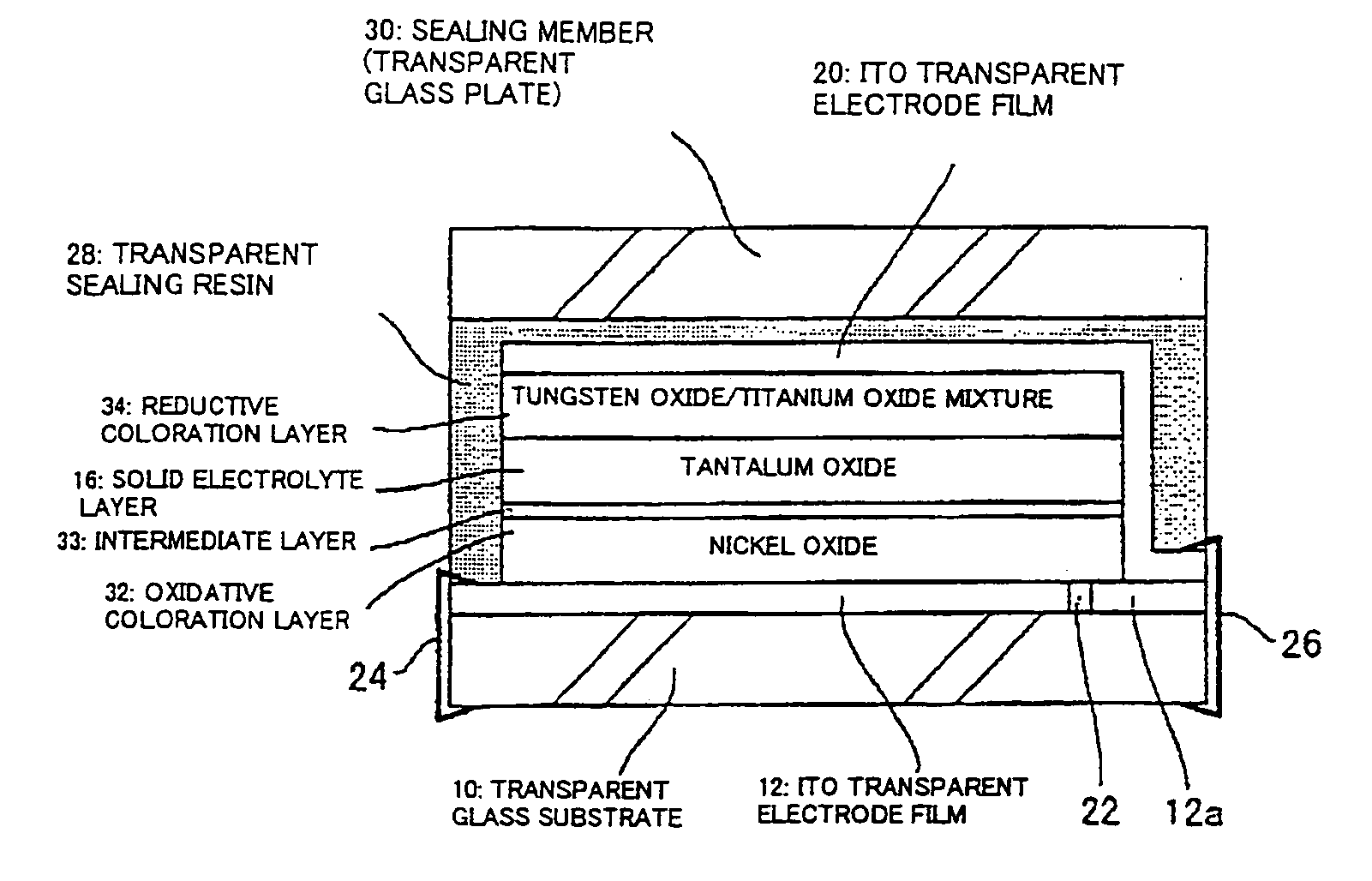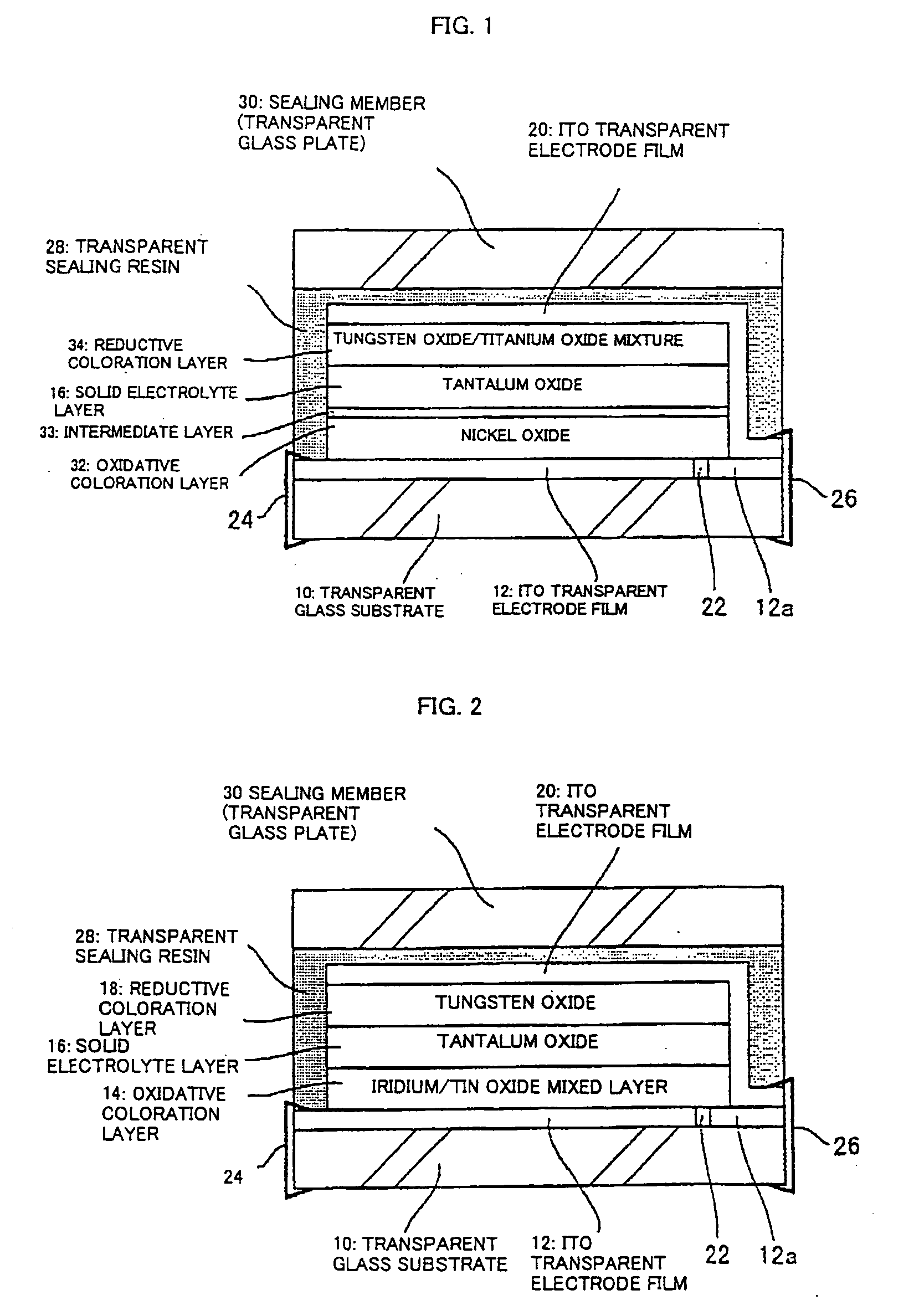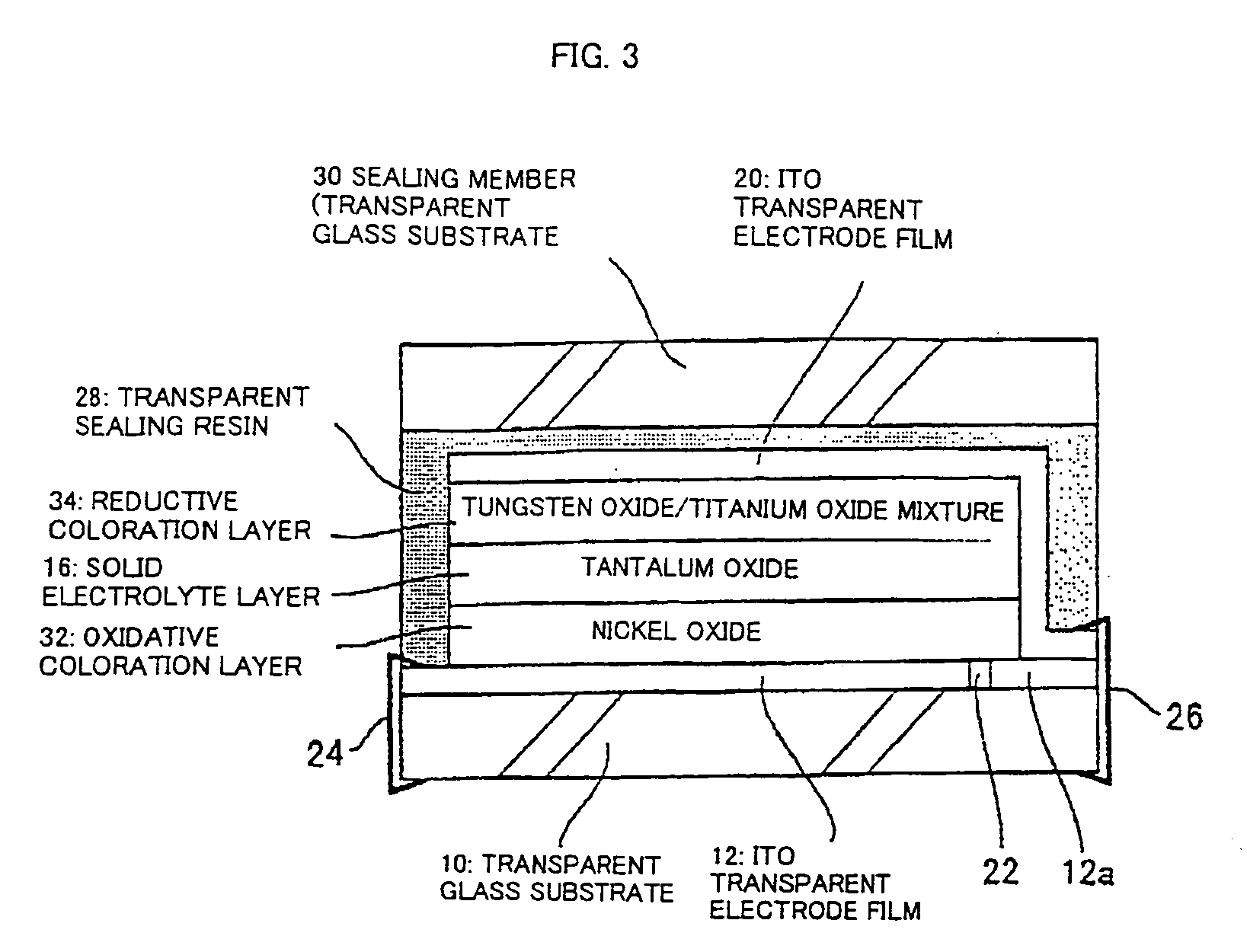Electrochromic element
a technology of ec elements and ec elements, applied in non-linear optics, instruments, optics, etc., can solve the problems of difficult control of white balance, inability to use conventional ec elements instead of nd filters, etc., to suppress characteristic deterioration, suppress characteristic deterioration, inhibit transparency
- Summary
- Abstract
- Description
- Claims
- Application Information
AI Technical Summary
Benefits of technology
Problems solved by technology
Method used
Image
Examples
first embodiment
[0065] First embodiment of an EC element according to the present invention is shown in FIG. 1. This EC element is composed of the EC element of FIG. 3 described above having a gray color at the time of coloration having a device for measuring durability according to the present invention. The same portions as those of FIG. 3 are assigned to the same symbols. The matters which are not described hereinbellow are the matters which have already been described in the description of FIG. 3 and, thus, as for these matters, see the description of FIG. 3. In FIG. 1, an ITO transparent electrode film 12 making up a lower electrode film is formed on a transparent glass substrate 10, a nickel oxide film 32 making up an oxidative coloration layer, an intermediate layer 33, a tantalum oxide film 16 making up a solid electrolyte layer, a mixed film 34 comprising a tungsten oxide and a titanium oxide making up a reductive coloration layer, an ITO transparent electrode film 20 making up an upper el...
second embodiment
[0092]FIG. 16 is a drawing showing a second embodiment of the present invention. This embodiment is an EC element in the embodiment shown in FIG. 1 where the arrangement of the nickel oxide film 32 making up the oxidative coloration layer and the mixed film 34 comprising a tungsten oxide and a titanium oxide making up the reductive coloration layer are altered. Parts common to those of the embodiment of FIG. 1 are assigned to the same symbols.
third embodiment
[0093]FIG. 17 is a drawing showing a third embodiment of the present invention. In this embodiment, an anti-glare mirror for an automobile or such is configured whose surface side is at the substrate side. Parts common to those of the embodiment of FIG. 1 are assigned to the same symbols. An ITO transparent electrode film 12 making up a lower electrode film is formed on a transparent glass substrate 10, a nickel oxide film 32 making up an oxidative coloration layer, an intermediate layer 33, a tantalum oxide film 16 making up a solid electrolyte layer, a mixed film 34 comprising tungsten oxide and titanium oxide making up a reductive coloration layer, a reflecting electrode film 44 made of Al, Ni, Cr, or such making up an upper electrode film are formed on this order. A parting line 22 is previously formed on one edge of the lower ITO transparent electrode film 12 by a laser etching process, so that an area 12a of the edge portion is electrically partitioned. One edge of the upper r...
PUM
| Property | Measurement | Unit |
|---|---|---|
| thickness | aaaaa | aaaaa |
| thickness | aaaaa | aaaaa |
| thickness | aaaaa | aaaaa |
Abstract
Description
Claims
Application Information
 Login to View More
Login to View More - R&D
- Intellectual Property
- Life Sciences
- Materials
- Tech Scout
- Unparalleled Data Quality
- Higher Quality Content
- 60% Fewer Hallucinations
Browse by: Latest US Patents, China's latest patents, Technical Efficacy Thesaurus, Application Domain, Technology Topic, Popular Technical Reports.
© 2025 PatSnap. All rights reserved.Legal|Privacy policy|Modern Slavery Act Transparency Statement|Sitemap|About US| Contact US: help@patsnap.com



